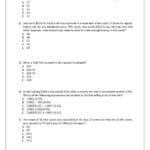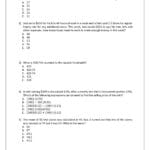Pressure injuries, commonly known as bedsores or pressure ulcers, develop when sustained pressure restricts blood flow to the skin and underlying tissues. While some pressure injuries are easily categorized into stages based on their depth, others are more complex. This article provides a deep dive into unstageable pressure injuries, covering their identification, treatment, and prevention. Get ready for the AFOQT with our comprehensive afoqt practice test and afoqt practice questions that will help you excel in the exam.
Decoding the Mystery: What is an Unstageable Pressure Injury?
Unstageable pressure injuries are essentially pressure injuries where the full extent of tissue damage is hidden beneath a layer of dead tissue called slough (yellow, tan, gray, green, or brown) or eschar (tan, brown, or black). Think of it like trying to measure the depth of a puddle covered in leaves—you can’t truly assess it until you remove the covering. This makes determining the true stage and appropriate treatment challenging. Unstageable pressure injuries are full-thickness wounds obscured by slough and/or eschar, making accurate assessment crucial for effective treatment.
Assessing the Hidden Damage
Diagnosing an unstageable pressure injury requires careful detective work. While the presence of slough or eschar is a key indicator, it’s important to differentiate it from other wound types, such as diabetic, venous, or arterial ulcers. Proper identification of unstageable pressure injuries requires differentiating them from other wound types and understanding the underlying tissue damage. Healthcare professionals assess the wound’s appearance, palpate the surrounding area to gauge the extent of underlying tissue damage, and may employ advanced diagnostic techniques to gain a clearer picture.
Treating Unstageable Pressure Injuries: A Multifaceted Approach
Treatment for unstageable pressure injuries focuses on debridement, infection control, and supporting wound healing, tailored to the individual patient’s needs.
Debridement: This critical first step involves removing the slough and eschar to reveal the wound bed and allow for accurate assessment. Several debridement methods exist, including surgical, enzymatic, autolytic, and mechanical, each with its own advantages and disadvantages. The choice of method depends on the patient’s overall health, the wound’s characteristics, and available resources.
Infection Control: Unstageable pressure injuries are highly susceptible to infection. Regular cleaning with appropriate solutions and the judicious use of antimicrobials are crucial for managing infection risk. Ongoing monitoring for signs of infection, such as increased pain, swelling, or purulent drainage, is essential.
Wound Dressings: The right dressing plays a vital role in maintaining a moist wound environment, managing exudate (drainage), and promoting healing. The choice of dressing depends on factors like the amount of drainage, the presence of infection, and the wound’s location.
Support Surfaces: Specialized mattresses, cushions, and beds help redistribute pressure, reducing strain on the affected area and promoting blood flow to the wound. This optimized environment fosters faster healing and prevents further tissue breakdown.
Nutritional Support: Adequate nutrition is the cornerstone of wound healing. A balanced diet rich in protein, vitamins, and minerals provides the body with the necessary building blocks for tissue repair. In some cases, nutritional supplements may be recommended to address specific deficiencies.
Prevention: The First Line of Defense
Preventing unstageable pressure injuries involves regular skin assessment, repositioning, pressure relief, and optimizing nutrition and moisture control. Regular skin assessments, especially for those at high risk, help detect early signs of pressure damage. Frequent repositioning—at least every two hours for bedridden individuals and every hour for those in wheelchairs—is crucial for relieving pressure on bony prominences. Pressure-relieving devices, like specialized mattresses and cushions, further minimize pressure and shear forces. Proper skincare, including keeping the skin clean and dry, and maintaining optimal nutrition contribute significantly to pressure injury prevention.
Complications: Addressing Potential Setbacks
Despite best efforts, complications can arise. Infection, osteomyelitis (bone infection), sepsis (a severe systemic infection), and chronic pain are potential concerns. Early detection and prompt management are vital for minimizing these risks. Regular monitoring, open communication with healthcare professionals, and proactive interventions are essential for preventing these complications from escalating.
Exploring the Future of Treatment
The field of wound care is continually evolving, and new treatments for unstageable pressure injuries are constantly emerging. Negative pressure wound therapy, growth factors, and bioengineered skin substitutes show promising results and offer hope for improved healing outcomes. Ongoing research and clinical trials continue to refine these treatments and explore novel approaches to managing these complex wounds.
Unstageable vs. Stage 4: Understanding the Differences
Both unstageable and Stage 4 pressure injuries represent serious tissue damage, but they differ significantly in their presentation. Stage 4 injuries have exposed muscle, tendon, or bone, immediately revealing the extent of damage. Unstageable injuries, however, conceal the depth of tissue involvement beneath slough or eschar. While a Stage 4 injury may appear more severe due to the visible tissue loss, an unstageable injury could potentially involve even greater underlying damage. This diagnostic uncertainty makes unstageable injuries particularly challenging.
Diving Deeper into Pressure Injury Stages
Understanding the different stages of pressure injuries is critical for proper management. The four stages, ranging from Stage 1 (non-blanchable redness) to Stage 4 (exposed deep tissues), represent increasing levels of tissue damage. Early detection and intervention are crucial to prevent progression to more severe stages.
Distinguishing Deep Tissue Injury from Unstageable Pressure Injury
Deep tissue injury (DTI) is another type of pressure injury that can be difficult to diagnose. DTIs often appear as discolored areas of intact or non-intact skin, potentially with blood-filled blisters. While the surface appearance may not seem alarming, the underlying tissue damage can be extensive. The key difference from unstageable injuries lies in the presence of slough or eschar. In unstageable injuries, these necrotic tissues obscure the wound bed, while in DTIs, the skin may be intact or damaged, but without the characteristic covering.
The Bottom Line
Unstageable pressure injuries present unique challenges, but with diligent assessment, comprehensive treatment, and proactive prevention, positive outcomes are achievable. Staying informed about the latest advancements in wound care and working closely with healthcare professionals are vital for managing these complex wounds effectively. Remember, knowledge and proactive care are your greatest allies in preventing and treating pressure injuries.
- China II Review: Delicious Food & Speedy Service - April 17, 2025
- Understand Virginia’s Flag: History & Debate - April 17, 2025
- Explore Long Island’s Map: Unique Regions & Insights - April 17, 2025

















1 thought on “Unstageable Pressure Injuries: A Comprehensive Guide to Understanding, Assessment, and Management”
Comments are closed.